Down The Rabbit Hole
 I take it WILD, my “nature cocktail,” with a slice of Rugged and a pinch of Barely Accessible, straight up. Never could stay on a path, unless it’s one the deer have mashed out with their cloven-hoof comings and goings.
I take it WILD, my “nature cocktail,” with a slice of Rugged and a pinch of Barely Accessible, straight up. Never could stay on a path, unless it’s one the deer have mashed out with their cloven-hoof comings and goings.
Oh, I still whine about the ticks, the thorns, the burrs speckling my khakis, but secretly – I like it.
Those lesions and adhesions symbolize, for me, an initiation rite… When I’m brave enough to bare my back to Nature’s slicing and sunburn, a “wall” seems to open, revealing a hidden world.
It’s as though I’ve been accepted into an exclusive community bustling with animals, birds, insects, all going about their business as though humans were merely a mild curiosity, nothing to mind.
It’s an Alice in the Rabbit Hole experience, something you can’t plan for. But if willing to take the dive, the glorious “Unknowing” is wilder than dreams.
Here are a few pics from some of my excursions into Nature’s Wonderland. I know your experiences are equally wonderful… please share them with me!
Confession
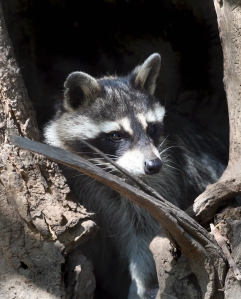 This is the time of year when I feel like a fraud. This is the season when my personal mantra of “live in the NOW and celebrate this moment” doesn’t spring from felt conviction…It seems I have to get behind it and SHOVE it forth, this sluggish belief, wondering when the ole gal took on so many extra pounds. It’s not officially autumn yet, and already the melancholy is setting in. Why? Though a professed lover of nature, I DO NOT LIKE WINTER.
This is the time of year when I feel like a fraud. This is the season when my personal mantra of “live in the NOW and celebrate this moment” doesn’t spring from felt conviction…It seems I have to get behind it and SHOVE it forth, this sluggish belief, wondering when the ole gal took on so many extra pounds. It’s not officially autumn yet, and already the melancholy is setting in. Why? Though a professed lover of nature, I DO NOT LIKE WINTER.
Maybe it’s my addiction to prismatic experience. In summer, the senses are assaulted by myriad hues riding the backs of Summer Tanagers and slathered over the satin surfaces of roses and kaleidoscopic insect wings. You don’t have to search for it, you can’t even HIDE from it. It’s surrounds you like skin, holding in blood and sinew, a part of you.
Yeah, sure, I understand (intellectually) the cyclical nature of the earth, how death necessitates rebirth, yada, yada… But I FEEL it about as much as one feels the 10th consecutive recitation of “Hail Mary…” It’s ritualistic at that point, thought without heart. (My apologies to those whose experience is otherwise).
That said, this post is a personal lecture. These are the points I want to make to my Seasonally-Affected Disordered Self:
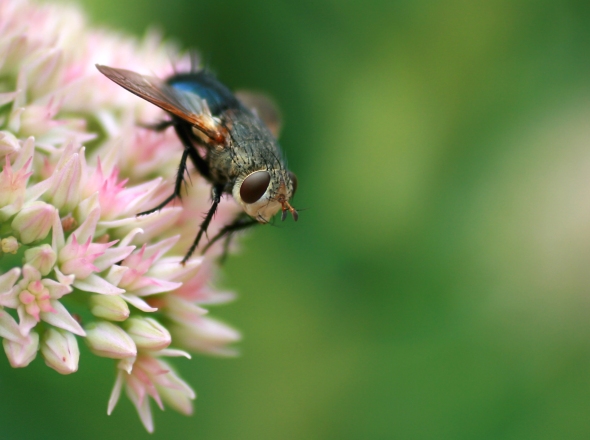 A) Regarding nature, winter just means you have to look a little harder, search a little deeper for delight. Think of it like a geocache… takes some sweat to locate the thing, but the “goodies” inside are always a surprise, so make it a game.
A) Regarding nature, winter just means you have to look a little harder, search a little deeper for delight. Think of it like a geocache… takes some sweat to locate the thing, but the “goodies” inside are always a surprise, so make it a game.
B) Take advantage of the silence. Yes, you’ll miss the soft calls of those blue-gray gnat-catchers, the throaty “garr-rump!” of the frogs… but if spring, summer, fall are urgent, often ecstatical Prayer, then winter is a quiet Listening for the Answer. As Rumi suggested, “Try and be a sheet of paper with nothing on it. Be a spot of ground where nothing is growing, where something might be planted; a seed, possibly, from the Absolute.” Take walks alone, without your I-Pod, your I-Phone, your I-Mac, or your I-Anything (and even — dare I say it? your CAMERA) and just see what happens. Forgetting clocks and calendars, take Grace on its own terms, in it’s own time and chosen form.
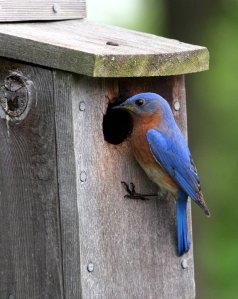 C) Learn to let go. I know you grieve the leaving of these PARTICULAR flowers and insects. Attachment, though, is not the equivalent of love. Trust that the Universe is functioning as it should, unfolding at perfect speed and precision. Events, relationships, careers – like nature — are marching in and out of your life according to perfect, Divine Order, and each passing fords the way for another to enter. To hold on, stubbornly tugging at one who is being led away, is to wound both them and you. Trust your dear creatures, both the human and animal kind, to their own path.
C) Learn to let go. I know you grieve the leaving of these PARTICULAR flowers and insects. Attachment, though, is not the equivalent of love. Trust that the Universe is functioning as it should, unfolding at perfect speed and precision. Events, relationships, careers – like nature — are marching in and out of your life according to perfect, Divine Order, and each passing fords the way for another to enter. To hold on, stubbornly tugging at one who is being led away, is to wound both them and you. Trust your dear creatures, both the human and animal kind, to their own path.
D) You get what you need, when you need it. Have faith in the process. Are you not like a barn cat, shamelessly rubbing your soul against the Divine, asking for what you didn’t’ earn? But God is ever willing, is He/She not, (and so often through the soft glove of Nature), to scratch that divine itch, press Its body near to yours, simply to hear you purrrrr.
E) Lastly, remember that the hushing of all that summer din affords air space for your own gratitude solo. Fill the quiet places with THAT. Let it fall in with the floating autumn leaves, let it fill the spaces in the trees that the warblers have vacated. Cover the icy lake with it where the Great White Egret used to feed, scatter it like seed on frozen ground…. You’ll be surprised what’ll grow…come Spring.
So this, friends, was my pathos and my pep-talk, my purging and my prayer. I’m closing it like Emily Dickinson, the Belle of Amherst, did her poem-prayer “Summer Obsequies” so many years ago,
“In the name of the Bee,
and of the Butterfly,
and of the Breeze,
AMEN.”
The Wonder of Water
It was some serious rain.
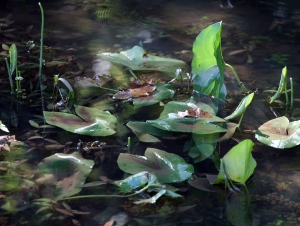 6-8” between that 5 a.m. clap of thunder that jerked the neighborhood awake and the silent, swift-rising chimera of cloud that enveloped us eerily around midnight. Cars crashed. Streets flooded. Stretches of interstate were closed for hours. I swear, within the first four hours, brown yards greened.
6-8” between that 5 a.m. clap of thunder that jerked the neighborhood awake and the silent, swift-rising chimera of cloud that enveloped us eerily around midnight. Cars crashed. Streets flooded. Stretches of interstate were closed for hours. I swear, within the first four hours, brown yards greened.
The air smelled clean at first, then of fish and frogs and wet dogs. The hum of air conditioners in the cul-de-sac stilled. It was the promise of autumn, spilled out on the first day of September following a fly-swatting, high-tempered, drought-laden August experience.
WATER. Finally, and enough.
By next morning it seemed every living thing was in better humor. As e.e.cummings wrote, the world was “mud-licious and puddle-wonderful.” There was nothing better to be done than to head for Anne’s Lake and see how happy the ducks and dragonflies had become overnight…
The fog was thick and phantom-like, swirling around the ankles of willows and sucking up whole geese, magician-style. Mallards vacuumed the shoreline, gorging on insects the wind blew in. Damselflies participated in open-air orgies, as a red-tailed hawk eyed it all with detached superiority from atop a diseased oak. All of this activity, commotion arose from the weepy fits of a few angry clouds! Marvelous, the power of water!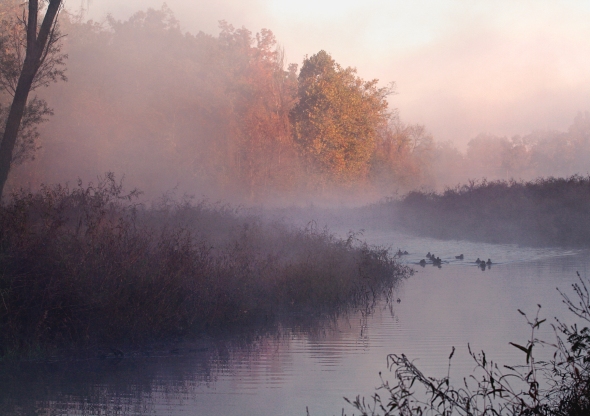
THINK of it, what water can do!
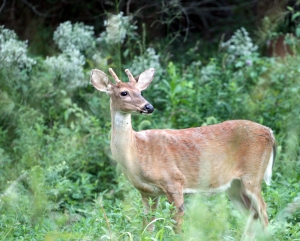 We all know that the 277 river-miles of the Grand Canyon was carved by water. Solid rock! Carved from fluid but persistent water! At it’s deepest, the canyon is 6000 feet from canyon rim to river bottom, 10 miles across at its widest. A raft trip through it can take 2 weeks, a hike to the bottom and back 2-3 days.
We all know that the 277 river-miles of the Grand Canyon was carved by water. Solid rock! Carved from fluid but persistent water! At it’s deepest, the canyon is 6000 feet from canyon rim to river bottom, 10 miles across at its widest. A raft trip through it can take 2 weeks, a hike to the bottom and back 2-3 days.
Water (or lack thereof) has forced many plant and animal species to evolve a compensatory set of skills to survive. Take, for instance, the camel. Rather than the circular red blood cells that all other mammals have, it has oval cells that assists flow in a dehydrated condition. When camels exhale, water vapor is trapped by their nostrils and returned to their bodies. Their kidneys retain water so efficiently that a camel’s defecation is so dry it’s often used as fire-starter.
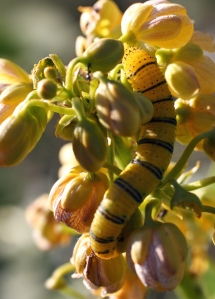 And how less wonderful would this world be without creatures who make water their home? Consider the sea turtles who start out biting and clawing their way through their shells, dig furiously through a foot of sand to reach the surface, navigate to the sea by moonlight and swim continuously for days to reach deeper, safer waters, fueled solely by their own egg yolk residuals!
And how less wonderful would this world be without creatures who make water their home? Consider the sea turtles who start out biting and clawing their way through their shells, dig furiously through a foot of sand to reach the surface, navigate to the sea by moonlight and swim continuously for days to reach deeper, safer waters, fueled solely by their own egg yolk residuals!
Think of the role the ocean plays in the phenomenon of the advancing carpet of red crabs on Christmas Island in the Indian Ocean. Each fall the red crabs, 120 million strong, migrate across highways, schoolyards, parking lots and a golf course to the sea to spawn. This blanket of red bodies is so dense that it can be seen from airplanes. Locals shovel them from their sidewalks and adjust their daily lives to accommodate them. Take, for instance, the die-hard golfers on the island’s single course who have adopted the rule that the crabs “belong to the game…” meaning if a crab manages to push a golf ball into a hole, it counts as IN.
Masaru Emoto is a Japanese author known for his work called “Messages From Water,” in which he claims — and aims to show through microscopic photography — that human thoughts directed at water droplets before freezing affect the water crystals in the frozen state. His research strives to show that positive thoughts (whether through prayer, words of intent or music) produce “beautiful” crystals, whereas negative ones produce “ugly,” misshapen ones. The inference is that water has a secret life of its own and that it can absorb and transmit human emotions. He conjectures that this can be utilized for its curative properties in ways never before imagined. Emoto does, of course, have his critics in the scientific world, and it doesn’t aid his credibility that he sells products based on his “findings.” So far, however, his experiments (to my knowledge) haven’t been DISproven. If you watched the wildly popular and highly controversial video “The Secret,” you saw similar experiments and outcomes.
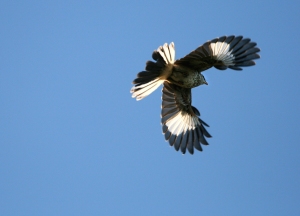 If, indeed, his experiments (and many similar ones conducted by scientists since) are conclusive and support his hypothesis, the ensuing question begs an answer: does water hold the key to many scientific and spiritual mysteries? Is it a bigger piece in the God-puzzle than we ever imagined?
If, indeed, his experiments (and many similar ones conducted by scientists since) are conclusive and support his hypothesis, the ensuing question begs an answer: does water hold the key to many scientific and spiritual mysteries? Is it a bigger piece in the God-puzzle than we ever imagined?
Of course, “everything old is new again,” and if you were to describe these “new” findings to an Native American elder, you’d likely receive a slow, knowing smile. Maybe we’ll discuss these issues again later. For now, I’m just content to sit and gaze on the dozens of little rivulets parting over stones and twigs in the stream, lose myself in the way it catches the light, throws itself over rocks in a suicidal manner, then recovers at the bottom to flow, seemingly uninterrupted and completely at peace, onward.
In the words of Rumi, “the wonder of water moving over that rock justifies existence.”
What The Fawn Told Me
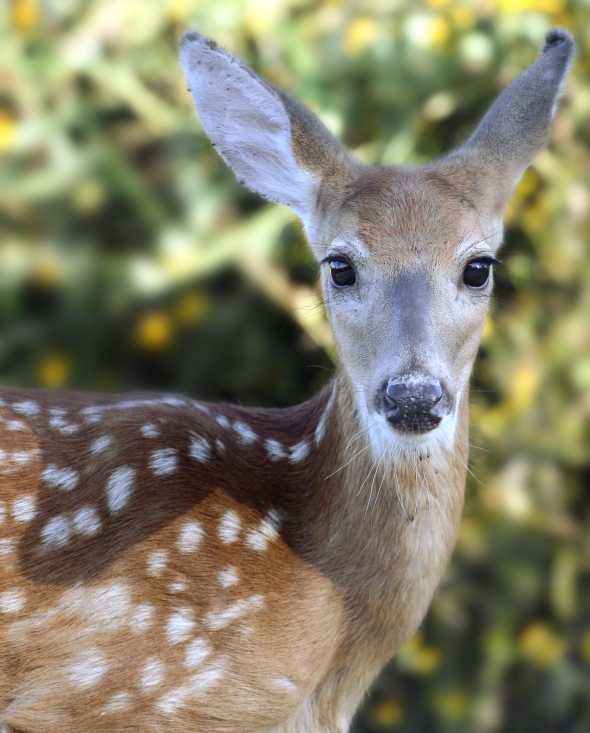 “You don’t scare me, Human. Only a little, but I’m young and lithe, all muscle and sinew and curiosity. Yes, my pink mouth does occasionally grope for my mother’s milk, but see how aptly I crunch away at summer flowers gone to seed!
“You don’t scare me, Human. Only a little, but I’m young and lithe, all muscle and sinew and curiosity. Yes, my pink mouth does occasionally grope for my mother’s milk, but see how aptly I crunch away at summer flowers gone to seed!
 “I can see, as I poke my head (consisting mostly of eyes and lashes) out from this shield of thistle, that I’m nearly killing you with delight. I know my power.
“I can see, as I poke my head (consisting mostly of eyes and lashes) out from this shield of thistle, that I’m nearly killing you with delight. I know my power.
“Don’t let these fading spots mislead you, Human. I’m not naive. I’ve listened to the gathering herd’s rumblings, the rumors of Warm leaving for a long while, but always returning…how blackberries and ripe persimmons disappear, leaving the stomach empty and the landscape void of its sheltering green walls. But I’m not afraid.
“One day soon, I’ll command my clumsy, lanky legs. They’ll have become strong and sure, easily leaping a 6 foot fence from a standing position, 10 if I get a running start. My large, veined ears will turn 180 degrees and tremble at the howl of the coyote, and my nose will sniff out an acorn buried beneath inches of snow. I have superior instincts. Already I can distinguish Safety from all that it’s not. Did you know my antlers can grow more than 1/2 inch per day?
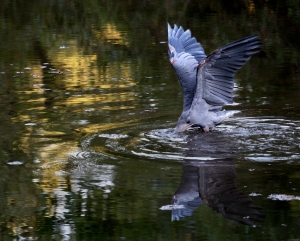 “By this time next year, I may have come nose to nose with the smoking arms of metal that smell of sulphur. I may have seen death by then, have smelled the bones of one of my own. I’m told how the honied light on the lake dims and grays, how the water becomes crunchy and harder to swallow, but I’m prepared.
“By this time next year, I may have come nose to nose with the smoking arms of metal that smell of sulphur. I may have seen death by then, have smelled the bones of one of my own. I’m told how the honied light on the lake dims and grays, how the water becomes crunchy and harder to swallow, but I’m prepared.
See here? I practice my snorts and stomps, learn to interpret shadow and rustles. Even now, my cloven hooves can trot across fallen twigs without causing a single snap.
“I can tell you fear for me, Strange Empathic Being, but you needn’t worry. I’m in training now, and there’s no going back. If you visit me again when Winter’s white palm has turned over to reveal the brown knuckles of Spring, you’ll find me wiser and more skilled, having practiced Living in the dark.
“I trust the Good Mother’s promise to return the light, the warmth, the abundance when I most need it. Do you?
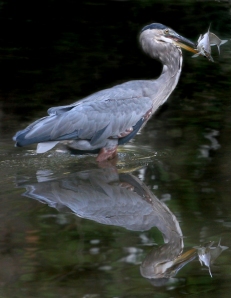 “There comes a renewal, Human, a restoring, A Giving Back and then some of all we thought was taken. It happens whether or not you think you deserve it, and whether you believe it or not, though believing makes the waiting easier.
“There comes a renewal, Human, a restoring, A Giving Back and then some of all we thought was taken. It happens whether or not you think you deserve it, and whether you believe it or not, though believing makes the waiting easier.
“If you Humans can entrust me, and those like me, to the care of the Season-Changer, can you not entrust your children, your lover, your friends…
perhaps, even…
...yourself?”
Making Scents of Things
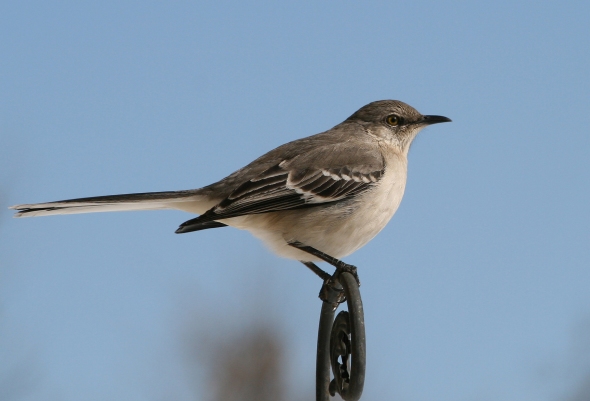 Stepped outside this morning and smelled autumn in the air. Not the recognizable smells of burning leaves, pumpkins rotting on the vine, baskets of mums or ripe apples in the orchard…something indefinable, but palpable.
Stepped outside this morning and smelled autumn in the air. Not the recognizable smells of burning leaves, pumpkins rotting on the vine, baskets of mums or ripe apples in the orchard…something indefinable, but palpable.
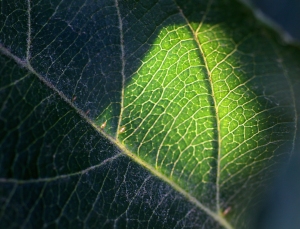 My grandmother had no sense of smell. We all had our laughs when we’d bring her handfuls of silk flowers in a bud vase and she’d sniff them instinctively, put water in the vase and stick it in her windowsill so the flowers could “get some sun.” The laughter died, however, when we realized that Grandma LolaMae couldn’t detect when something was burning on the stove or when the milk in the fridge had gone sour. In those moments, the value of the sensory cells of the nasal cavity became very apparent.
My grandmother had no sense of smell. We all had our laughs when we’d bring her handfuls of silk flowers in a bud vase and she’d sniff them instinctively, put water in the vase and stick it in her windowsill so the flowers could “get some sun.” The laughter died, however, when we realized that Grandma LolaMae couldn’t detect when something was burning on the stove or when the milk in the fridge had gone sour. In those moments, the value of the sensory cells of the nasal cavity became very apparent.
Olfaction (smell) is basically our ability to identify something by breathing in the odor produced when microscopic amounts of a substance evaporate. In nature, this is a vital survival tool, thus most vertebrates have more olfactory nerve cells than do humans. It’s interesting to see how this plays out…for instance, mule deer have scent glands on their hind legs, near the hooves, so fawns can sniff them and recognize their moms. On the roof of snakes’ mouths are receptors that smell and taste the pheromones that their forked tongues collect. Zoos in the U.K. discovered, in 1994, that when their keepers wore perfume or aftershave, it often started a sexual riot in the big cat and monkey exhibits! This was traced back to the use in commercial scents of an animal extract called civet and a simulated version of deer musk: scents animals use to signal attraction to one another. Because of the surge in lasciviousness these scents evoked, the Basildon zoo was forced to post this request to zoo-goers: “Would any visitors wearing strong perfume or aftershave please stand well back from the animals.” Well, YEAH!
In humans, scents are often closely tied to individual memories….for instance, for me the smell of freshly tilled soil evokes
 recall of the mounds of gladiolas my mother used to plant…row after row of black Illinois dirt turned and patted, pitted for a bulb to be placed. In summer, an extavagant display of stiff stalks emerged like colorful soldiers standing at attention, decked in multi-hued uniforms. I liked the glads because they were ABUST with blooms, sprouting out all over as though the stalks had sprung leaks, too much color built up for the stems to retain without spewing them forth from every vein.
recall of the mounds of gladiolas my mother used to plant…row after row of black Illinois dirt turned and patted, pitted for a bulb to be placed. In summer, an extavagant display of stiff stalks emerged like colorful soldiers standing at attention, decked in multi-hued uniforms. I liked the glads because they were ABUST with blooms, sprouting out all over as though the stalks had sprung leaks, too much color built up for the stems to retain without spewing them forth from every vein.
The smell of muddy water sends me back to a spring when the rural road I lived on flooded, washing corn fields over it. My brother Tim and I delightfully participated in the surrealistic and unusual event of “swimming in the streets.” I can’t smell a mud puddle without time-traveling back to that.
Words seem to conjure generic mental images, whereas scents evoke highly event-specific, intimate visuals. Try this experiment: When I say “ocean,” does your brain con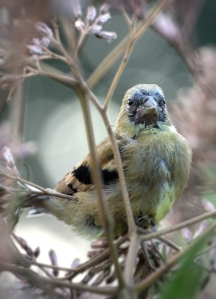 jure a generic ocean scene? It’s likely. But if I say “the SMELL of the ocean,” you’re likely transported to a particular day on a particular shore when in a particular moment you breathed deep and were acutely aware of the salt brine in the warm breeze, the smell of ancient waters, fishy nets, the rust and wet wood of planks and piers, the coconut scent of suntan lotion.
jure a generic ocean scene? It’s likely. But if I say “the SMELL of the ocean,” you’re likely transported to a particular day on a particular shore when in a particular moment you breathed deep and were acutely aware of the salt brine in the warm breeze, the smell of ancient waters, fishy nets, the rust and wet wood of planks and piers, the coconut scent of suntan lotion.
Breathing in the autumn smells this morning, I recalled an idea I’m fond of that I once read in Diane Ackerman’s book, A Natural History of the Senses. She writes: “Etymologically speaking, a breath is not neutral or bland – it’s cooked air; we live in a constant simmering. There is a furnace in our cells, and when we breathe we pass the world through our bodies, brew it lightly, and turn it loose again, gently altered for having known us.”
I wondered this morning, as I stepped out and took a big whiff of autumn, what and who I was breathing in….the cells of dead ancestors, the bones of expired animals, the microbial remains of trees from ancient forests? How does it change me, this molecular cauldron of scent and cells? How do I alter it, as I boomerang it forth to the world? Is it affected only by science, or by that magical mixture of science and Spirit? I may be unlearned, still I think I know…
JUST FOR FUN:
Here are some “smells” that are certain to evoke a strong reaction, maybe even a memory or two…Let your brain play with each of these for a moment!
Lasagna, hot out of the oven…Magic Marker…Chlorinated Pool…Puppy breath…Pine Forest….
Nail Polish…A new book…Starbucks…Road kill…Sex and Sweat…Singed hair…
 Top of a baby’s head…New box of crayons…Fresh-baked bread…Play-Doh…
Top of a baby’s head…New box of crayons…Fresh-baked bread…Play-Doh…
New plastic shower curtain…Lilac bush…Campfire…New car smell…Patchouli or Sandalwood…
Vicks Vaporub…Pink school erasers…Leather…Firecracker that’s just exploded…
Cigars…Clove cigarettes…Gasoline…Jasmine or Plumeria…
What are some of YOUR emotion or memory-evoking scents? Feel free to start a dialogue!
1,000 Things
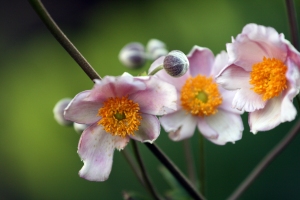 She looks like a seraphic white dove from a distance. Up close and in profile, like a fuzzy, green-eyed, hump-backed teddy bear. Head-on, like a cross-eyed, comical what-is-it. She’s always laughing, or so it appears. She’s my new favorite friend of the fluttery kind, and I almost missed her.
She looks like a seraphic white dove from a distance. Up close and in profile, like a fuzzy, green-eyed, hump-backed teddy bear. Head-on, like a cross-eyed, comical what-is-it. She’s always laughing, or so it appears. She’s my new favorite friend of the fluttery kind, and I almost missed her.
In fact, I almost missed it all. I’ll show her to you in a little bit, but first let me explain…
It was a gazillion degrees outside.
I had gravel in my flip-flops.
I was totally ticked off because it just wasn’t “happening for me,” photography-wise. I’d spotted a kingfisher perched politely on a bare branch on the opposite shore of the narrow lake, but by the time I got to that side, the kingfisher had gone fishing – elsewhere. Just then a dainty green heron lowered her wings and hooked a tree with her talons on the side of the lake I’d just come from. It seemed a wry taunt. I was not amused.
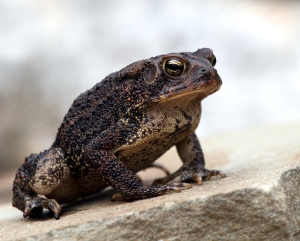 So here I was, in foul humor, limping hurriedly along to the next site I deemed having potential for that “one good shot,” frustrated and full of myself, when a voice in my head (yeah, I hear those) clearly chided,
So here I was, in foul humor, limping hurriedly along to the next site I deemed having potential for that “one good shot,” frustrated and full of myself, when a voice in my head (yeah, I hear those) clearly chided,
“You just missed one thousand things.”
I wasn’t in the mood for reprimands even from myself, so picked up my pace just for spite, but the voice was insistent. Crap. I KNOW that voice. It’s often right. Grudgingly, I set my camera bag down, fished out my macro lens to replace the telephoto I’d been sporting apparently, and solely, for the arm-workout the weight of it ensures.
I slowed down. Then stopped. I closed my eyes and listened.
And then, sure enough…… ONE THOUSAND THINGS.
Okay, more like dozens, since I’d likely already passed at least 900 of them in my haste. DOZENS went whirring or rustling or slithering or fluttering or gliding or ambling by and around me. Humble things, modest in size, but packed to the gills, the pinions, fur and scales with interest and beauty.
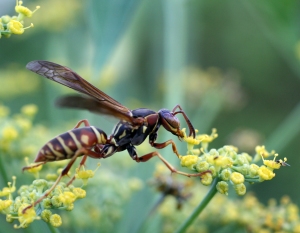 I had wanted to be the big shot photo-huntress, come back to camp with shots of raptors and snakes, white-tailed deer and shore birds, strutting in like a Navajo hunter with a trophy elk hide slung over his shoulder.
I had wanted to be the big shot photo-huntress, come back to camp with shots of raptors and snakes, white-tailed deer and shore birds, strutting in like a Navajo hunter with a trophy elk hide slung over his shoulder.
Instead (and I thank God for this), I sat down in a field of native prairie grasses taller than I, and listened to the stories the goldfinches, the red-winged blackbirds, the passionflowers and dragonflies were telling. I counted big-eyed skippers and lost track at 162, I laid on my back in the near-blooming goldenrod and listened to Earth’s breath, felt Her pulse.
After the voice and before another hour had passed, I had honestly seen hundreds of things I’d missed….some external, some within. So the question I’m scattering out here as seed is….what are YOUR “one thousand things?”
Are they the myriad expressions that pass across your child or grandchild’s face as a new revelation softly assaults their eager minds? Are they the subtle, unspoken ways your lover or spouse communicates to you your hallowed place in his/her life? Are you missing them while still looking for the “BIG birds?” Are they the ways the ocean waves curl and foam at your feet, inviting you to recognize your body’s kinship to the elements, being largely comprised, itself, of water? The personal satisfaction and self-confidence your work brings to you?
Will you slow down, pay attention, be informed, maybe even TRANSformed?
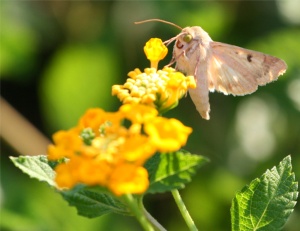 Here is the dove/bear/what-is-it I promised to tell you about earlier. Isn’t she delightful? She’s a flower moth of some sort (Schinia), though I haven’t been able to determine if she’s a unimacula, a luxa or a buta.
Here is the dove/bear/what-is-it I promised to tell you about earlier. Isn’t she delightful? She’s a flower moth of some sort (Schinia), though I haven’t been able to determine if she’s a unimacula, a luxa or a buta.
Doesn’t matter ….she’s just one of a thousand things I almost missed.
(Click on any photo to enlarge. Do you see what’s hiding in the next to last photo? She’s the Queen of Camo!)
Nature’s Not for Wimps
When the thermometer reads 100 degrees and the heat index is 110, going on an outdoor excursion willingly is bordering on the ridiculous, yes? I mean, who does this?! I do. But — red-faced, dripping with sweat (and not the kinda cute, girly kind of perspiration in a soft row just above the lips, but the in-your-eyes, bra-soaking, rolling-off -your-chin kind of sweat!) — I scored some sweet treasures.
Not five minutes into my foray, I made the acquaintance of this little fellow:
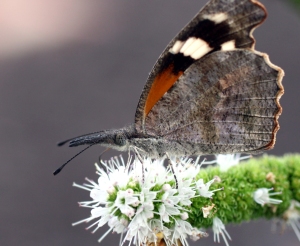 An American Snout-Nose Butterfly. Not all that common in gardens, I understand, except in years when a heavy rain is preceded by drought conditions, and then there’s a baby boom like you wouldn’t believe… no one knows for certain why, though there’s speculation that it’s because the hackberry shrubs, on which the larvae feed, send out so many new shoots that it’s feast time — until it’s not. And when that happens, the Jimmy Durantes of the butterfly world migrate. It’s not an organized, tidy migration like the monarchs manage, but a messy, devil-may-care one, in which no one seems to have a clear idea where they’re going. Presumably they’re going to find more hackberry shrubs. Wherever. And when they do, they fill the skies like snow flurries.
An American Snout-Nose Butterfly. Not all that common in gardens, I understand, except in years when a heavy rain is preceded by drought conditions, and then there’s a baby boom like you wouldn’t believe… no one knows for certain why, though there’s speculation that it’s because the hackberry shrubs, on which the larvae feed, send out so many new shoots that it’s feast time — until it’s not. And when that happens, the Jimmy Durantes of the butterfly world migrate. It’s not an organized, tidy migration like the monarchs manage, but a messy, devil-may-care one, in which no one seems to have a clear idea where they’re going. Presumably they’re going to find more hackberry shrubs. Wherever. And when they do, they fill the skies like snow flurries.
Case-in-point: Tuscon, Arizona, August 9th of 1966… a flock of migrating Snouts blackened the sky, squeezing out the sunlight until the street lights had to be turned on. Auto owners had to scrape thick layers of wings and noses from their windshields and grills that night, which makes me sad. Fortunately, my new S.N. friend was fully intact and cordial, posing for me at various angles: right-side up, up-side down, and mashed vertically against a twig, pretending to be a dead leaf, which I applauded for its comedic value.
This lovely lady was shrub-sharing with the Snout, two kids from different sides of the tracks.
To be honest, by this time I was hoping to bow out and hit the road…Had already been kamakazied by I don’t know HOW many Japanese Beetles, my sweat-soaked skin was becoming a bee magnet, and my ankles were being bitten by something hungry and indiscriminate.
But gardens are a tease, if you haven’t noticed… just about the time you sling that camera bag over your shoulder and fish for your car keys, something whistles or sings, something rustles in the grass, something catches a glint of sun and flings it back in your face, and the stage is set for a new show you’re hell-bent to watch. And so I did, and without complaint.
Had I wimped out on the rest of the walk, THIS is something I would have missed:
And this…
and this…
So okay, I’ll take the sun beating on my head like a mallet, the sting of the nettle, the bite of the chigger…The trade-off is more than a fair one, and I knew going into this that nature is not for wimps.
My Sister’s Eyes
 When my sister Theresa was a pre-teen, a ravaging disease stole her eyes. Eighty-five percent of her vision was lost before she had a chance to look out on much of the intricate diversity and insane beauty of this planet. She’s “legally blind,” and yet in ways an optometrist hasn’t the tools to measure, she’s one of the most “sighted souls” I’ve ever met… living always “in the moment,” fully present and acutely aware. She accomplishes more in a day than I do in a week, and does so with verve.
When my sister Theresa was a pre-teen, a ravaging disease stole her eyes. Eighty-five percent of her vision was lost before she had a chance to look out on much of the intricate diversity and insane beauty of this planet. She’s “legally blind,” and yet in ways an optometrist hasn’t the tools to measure, she’s one of the most “sighted souls” I’ve ever met… living always “in the moment,” fully present and acutely aware. She accomplishes more in a day than I do in a week, and does so with verve.
I empathize with Theresa regarding her visual limitations, which is not to say that I feel sorry for her. In fact, I aspire to “see” as well as my sister sees, to have those eyes — the ones that assemble a clear mental picture of any creature based not only upon limited visual information, but upon intangibles: insight, intuition, keen awareness of tone, inflection, body language (she can see basic shape and posture) and myriad other clues lost to those of us who operate from only a fraction of the resources available to us.
Why am I telling you all this?
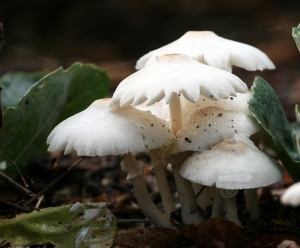 Because when I come home from the woods or fields lugging my camera bag full of maxed-out S.D. cards, feeling like I should be looking over my shoulder for thieves, so weighty is the value of my “treasure,” I can guarantee I’ve had Theresa on my mind.
Because when I come home from the woods or fields lugging my camera bag full of maxed-out S.D. cards, feeling like I should be looking over my shoulder for thieves, so weighty is the value of my “treasure,” I can guarantee I’ve had Theresa on my mind.
My hyper-awareness in nature is due in large part to the fact that since my sister lost her sight, I can no longer take one fascinating detail – not an ant’s fuzzy thorax or the alien eyes of a fly or the powdery curve of a butterfly’s wings — for granted, not one breath-stealing scene can fly by me without praise. I can see! I CAN see! I can SEE!
And so I will. I choose to pay attention. So if I go missing, find me — I’ll likely be sitting, blissed out beside an ant hill or beneath a cedar on my back in order to see what a waxwing looks like from the underside. You might have to pull my head by my hair out of the creek where I’ve plunged to get an eyeful of what a crayfish looks like in his own world, but wherever I am, you can bet your last dollar I’m looking, and looking hard….with mine and my sister’s eyes.
The Flower Kissers
That’s what the Portuguese call them: Beija-Flor, “flower kisser.” They’re hummingbirds, and I’ve been having a grand time photographing them lately. Okay, well – grand and frustrating time, considering their average flight speed is 25-30 mph and they can do a nose-dive at 60! I’ve been nearly impaled by one a couple of times this past week – they’re oblivious to me once engaged in defending their territory, and they’re ALWAYS defending their territory! Little ruffians, these guys. 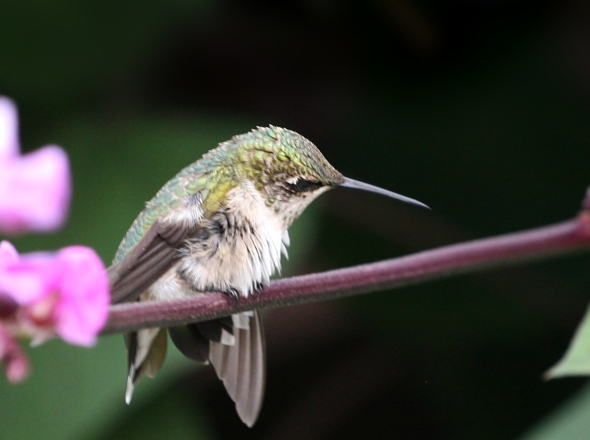 I had known that hummingbirds eat gnats for protein, but was surprised to witness one eating a spider, so I researched it when I got home, and yes, hummers not only eat spiders, but being opportunists, will eat all the insects caught within the web!
I had known that hummingbirds eat gnats for protein, but was surprised to witness one eating a spider, so I researched it when I got home, and yes, hummers not only eat spiders, but being opportunists, will eat all the insects caught within the web!
Another interesting behavior noted was what a friend calls “rain bathing.” I’m not a naturalist or ornithologist, so I was puzzled when I saw a female ruby-throat sliding across wet leaves…I thought she was trying to perch on one, and was losing her grip. Julie Zickefoose (who IS an expert – as well as a talented watercolorist) remarked that she was merely washing her feathers in the drops of water saturating the leaves.
Remember blowing bubbles as a child? (or, if like me, as an adult?) The color we see on hummers is like the color we see on those soap bubbles…not from pigment, but iridiscent, flashing on and off depending upon your angle when viewing them, and where the light source is. 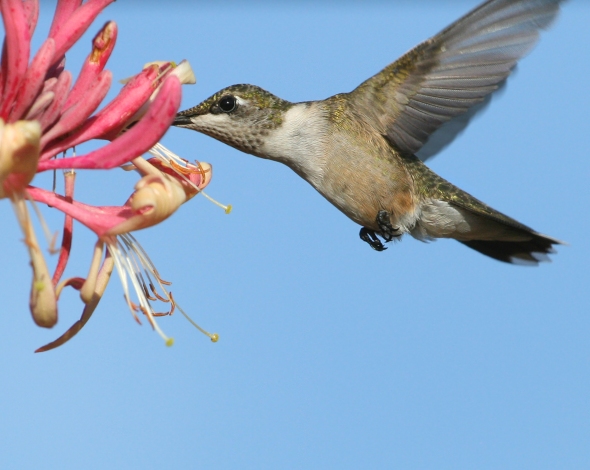 Their forked tongues absorb nectar like a paper towel absorbs water – through tiny capillaries. And their small hearts can beat at an amazing 1200 beats per minute or more! Those that migrate between Canada and Panama travel a distance, roughly, of 2000 miles, which includes a 500 mile journey over the Gulf of Mexico, in non-stop flight. Small and Mighty they are, not at all the fragile things that their appearance presumes.
Their forked tongues absorb nectar like a paper towel absorbs water – through tiny capillaries. And their small hearts can beat at an amazing 1200 beats per minute or more! Those that migrate between Canada and Panama travel a distance, roughly, of 2000 miles, which includes a 500 mile journey over the Gulf of Mexico, in non-stop flight. Small and Mighty they are, not at all the fragile things that their appearance presumes.
In flight, they are marvels of engineering. The wings beat in a figure 8 while hovering, and when flying they can move backwards, forwards, up, down, sideways, or even briefly upside-down! I still long to catch some of that bottoms-up action on camera, but haven’t yet been quick enough.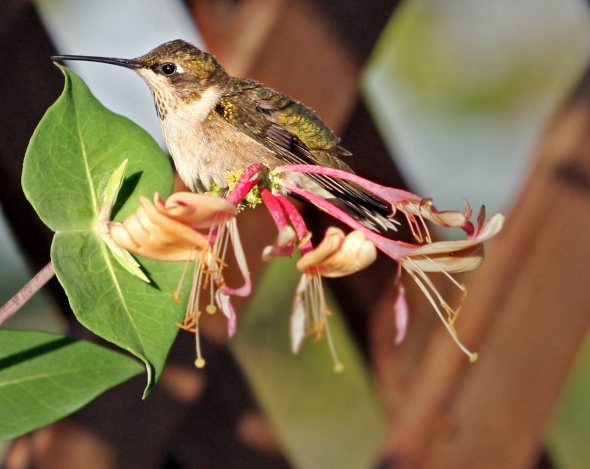
Field Notes
St. Francis said it first, and best:
“Such love does the sky now pour, that whenever I stand in a field, I have to wring out the light when I get home.”
That’s what this blog is all about: the light-wringing I do when I get home from the fields with my camera full of recorded moments and my mind still saturated in Nature-Love… and not just for the obviously beautiful parts of nature, but the terrifying, the savage, the predatory, since without the “dark,” the “light” has no definition. All is part of the fullness, the sphere, the web of what we call The Universe, necessary and beneficial. I appreciate it all, and count it a privelege to witness and record it.
Like the poet Mary Oliver, I believe that “My work is loving the world.” In part of her poem “Messenger,” she reminds herself to:
“…keep my mind on what matters, which is my work, which is mostly standing still
and learning to be astonished.
The phoebe, the delphinium. The sheep in the pasture, and the pasture.
Which is mostly rejoicing, since all the ingredients are here,
which is gratitude, to be given a heart and a mind
and these body-clothes,
a mouth with which to give shouts of joy
to the moth and the wren, to the sleepy dug-up clam,
telling them all, over and over, how it is
that we live forever.” *
If we spend much time in the fields, in the mountains, in the forests or by the seas, we soon comprehend the interconnectedness of all living things. We start to walk more softly… we start to accept, even appreciate, the polarity inherent in all beings, including those of the human kind. We cultivate more joy. Worry less. Re-learn how to play and pray. Nature has a way of softening us, out here in the “Light Fields.”
This blog, then, is my invitation to you. JOIN ME. Let’s explore nature together with the wide-eyed curiosity and open heart of a little child. Ready? Yes? Well then, as Rumi said,
“Out beyond ideas of wrong-doing or right-doing, there is a field…..I’ll meet you there.”
* Source: Poem “Messenger,” from the book Thirst by Pulitzer Prize-winner Mary Oliver, 2006 Beacon Press




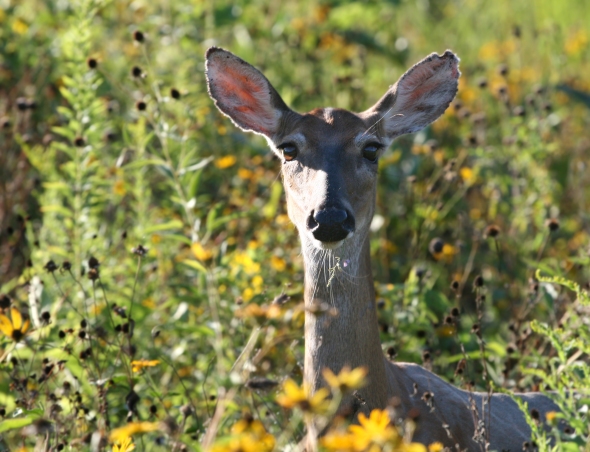




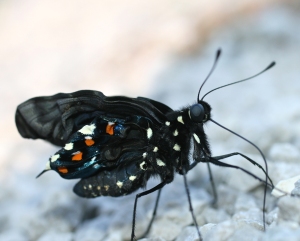
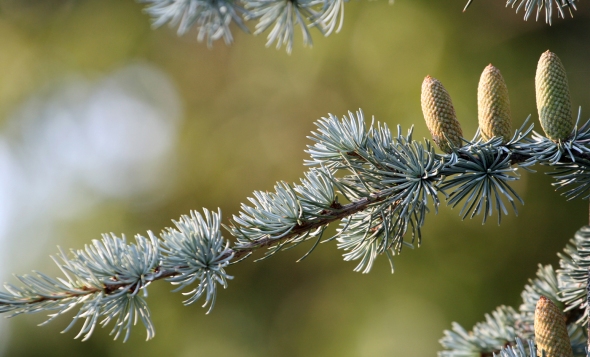
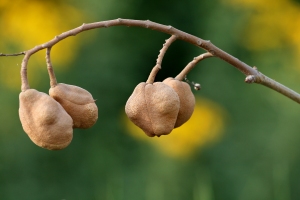
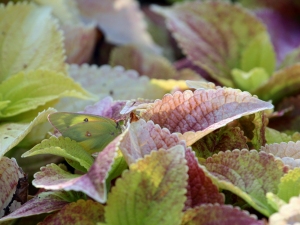
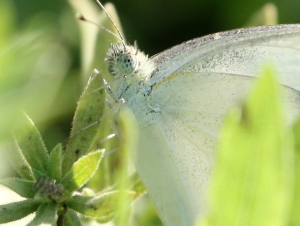

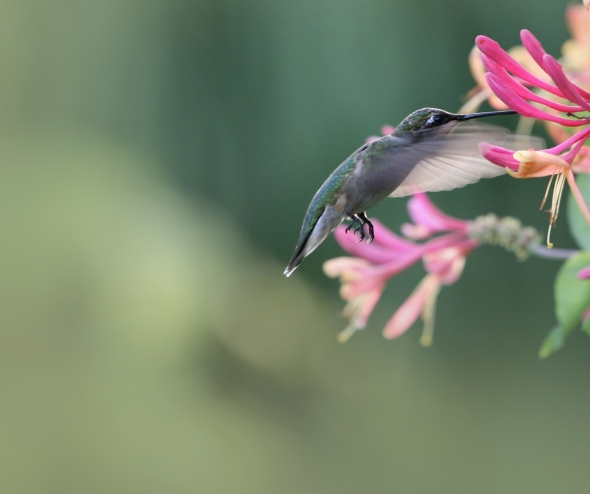
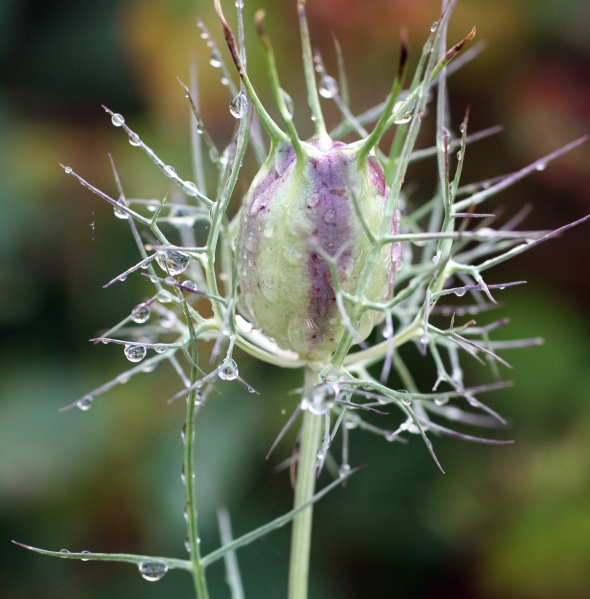

Recent Comments